The E30 generation of the 3 Series has achieved an iconic status among car enthusiasts, with its production run from 1982 to 1994 spanning over a decade. As the second generation of the 3 Series, it marked a significant milestone in the model’s history.
We will explore the historical significance of this vehicle, its various models, engine options, and what to look for when purchasing one today. With its perfect blend of performance, reliability, and timeless design, the E30 continues to captivate enthusiasts decades after production ended.
Table of Contents
The BMW E30 Legacy: Second Generation Excellence
The second generation of the 3 Series, known as the E30, is celebrated for its timeless design and engineering prowess. As a pivotal model in BMW’s history, the E30 has left a lasting legacy that continues to influence the automotive world today.
Historical Significance in BMW’s Lineup
The E30 was more than just a successor to the E21; it represented a significant leap forward in terms of design, engineering, and performance. Its introduction marked a new era for BMW, solidifying its position as a manufacturer of high-quality, performance-oriented vehicles. The E30 model became a benchmark for the industry, setting new standards for handling, comfort, and reliability.
Production Years and Global Impact (1982-1994)
The E30 was produced from 1982 to 1994, a period that saw BMW expand its global footprint. Manufactured in Munich, Regensburg (both in West Germany), and Rosslyn, South Africa, the E30 was assembled in various locations around the world. Models sold in certain markets, such as Indonesia and Thailand, were assembled using complete knock-down kits. This global production strategy helped BMW establish a strong presence in diverse markets.
Throughout its years of production, the E30 underwent several updates, ensuring it remained competitive and appealing to a wide range of consumers. The E30’s long production run and global distribution contributed significantly to its enduring legacy and worldwide fanbase.
| Production Location | Production Years | Notable Features |
|---|---|---|
| Munich, West Germany | 1982-1994 | Primary production site for global models |
| Regensburg, West Germany | 1982-1994 | Additional production capacity for European models |
| Rosslyn, South Africa | 1982-1994 | Production for local and regional markets |
The E30’s impact on the automotive world was profound, not just in terms of its performance and design but also in its contribution to BMW’s global success. As we explore further, the E30’s influence on subsequent BMW models and its continued popularity among enthusiasts become evident.
Evolution of the E30 Design
As we explore the E30’s design evolution, it becomes clear that its enduring popularity stems from a blend of form and function. The BMW E30 was a significant model in BMW’s lineup, and its design played a crucial role in its success.
Claus Luthe’s Iconic Styling
The original design of the E30 is attributed to Claus Luthe, whose vision shaped the car’s aesthetic. Luthe’s styling was characterized by clean lines and a balanced proportion, making the E30 both visually appealing and aerodynamically efficient. The initial design set the stage for the model’s future updates and facelifts.
“The E30 was designed with a focus on simplicity and elegance,” reflecting Luthe’s design philosophy. This approach not only made the E30 stand out in its class but also contributed to its timeless appeal.
First Facelift (1985): Subtle Refinements
In 1985, the E30 underwent its first facelift, which introduced subtle refinements to the model. These changes were aimed at enhancing the car’s overall appearance and improving its market competitiveness. The updates were minor, ensuring that the E30’s core design identity remained intact.
The 1985 facelift demonstrated BMW’s strategy of continuous improvement, allowing the E30 to stay relevant in a rapidly evolving automotive landscape.
Second Facelift (1987): Major Updates
The second facelift, introduced at the Frankfurt Motor Show in September 1987, marked a significant update to the E30, often referred to as the “Series 2” E30. This update included major styling changes such as redesigned rear lights, a new front bumper, and reduced chrome trim. The rear was completely redesigned with larger rear fenders, and the front wings were slightly inflated and wider.
The 1987 update also brought significant lineup changes, including the addition of the Touring (station wagon) variant and the removal of the 325e model. Mechanical updates included the upgrade from the BMW M10 to the BMW M40 four-cylinder engine, along with improved rust protection. These changes helped extend the E30’s market relevance well into the 1990s.
The major updates to the E30 in 1987 underscored BMW’s commitment to keeping the model competitive. By enhancing both the design and mechanical aspects, BMW ensured the E30 remained a desirable choice for consumers.
Body Styles and Variants
One of the most compelling aspects of the E30 is its array of body styles and model variants, which catered to a wide range of consumer preferences and market demands. The E30’s versatility is a testament to BMW’s innovative approach during the 1980s.
Two-Door and Four-Door Saloons
The E30 was initially launched as a two-door saloon, with a four-door version introduced later. These saloons formed the backbone of the E30 lineup, offering a blend of performance, style, and practicality. In South Africa, for instance, only the two-door and four-door saloons were produced, with four-cylinder petrol models continuing until 1992.
Convertible Models: Factory vs. Baur
The E30 was available as a convertible, with both factory-produced and Baur conversions offering open-top motoring. The factory convertibles were known for their robust construction, while Baur convertibles, built on customer request, provided an alternative with a slightly different design approach. The convertible models added a new dimension to the E30’s appeal, making it a desirable choice for those seeking a more exhilarating driving experience.
The Touring Estate: From Garage Project to Production
The E30 Touring estate, initially a garage project, eventually made it into production, showcasing BMW’s willingness to experiment and innovate. This variant offered increased practicality without compromising on the E30’s signature handling and performance. The Touring estate remains a sought-after model among E30 enthusiasts today.
Regional Special Editions
Regional special editions of the E30, such as the South African 333i and 325iS, were developed to meet local market demands and racing regulations. The 333i, fitted with a 3.2L M30 “big six” engine, and the 325iS, with its 2.7-liter Alpina M20B25 engine, are highly regarded among collectors. Similarly, the Italian/Portuguese 320is, often referred to as the “baby M3,” used a 2.0-liter version of the M3’s S14 engine to circumvent tax regulations, making it a unique variant.
These regional variations have become some of the most collectible and interesting E30 variants, often commanding significant premiums in today’s market. The diversity in E30 models is a significant part of its enduring appeal, offering something for every BMW E30 enthusiast.
Understanding the BMW E30 Engine Range
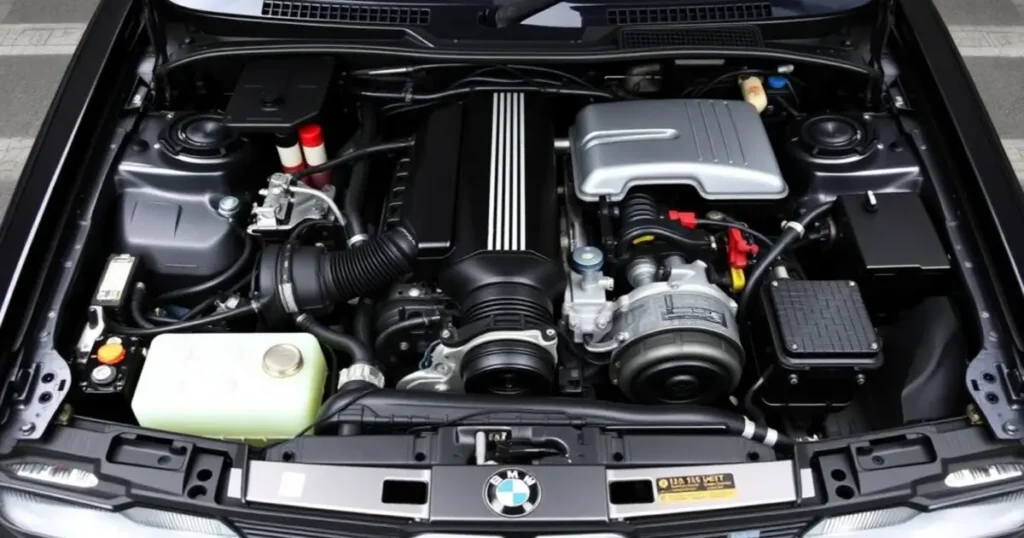
One of the key aspects that define the BMW E30 is its diverse and robust engine lineup. The E30 was produced with a variety of engines, ranging from economical four-cylinder units to powerful six-cylinder powerplants, and even diesel options.
Four-Cylinder Petrol Engines: M10, M40, and M42
The E30’s four-cylinder petrol engines included the M10, M40, and M42. The M10, used in early models like the 316, was known for its durability and ease of maintenance. Later models featured the M40 and M42, which offered improved performance and efficiency. These engines were crucial in making the E30 accessible to a wider audience due to their fuel efficiency and lower operating costs.
Six-Cylinder Petrol Powerplants: M20 Family
The M20 engine family was a highlight of the E30’s six-cylinder offerings, powering models like the 325i. Known for its smooth operation and robust performance, the M20 became a favorite among E30 enthusiasts. It provided a significant boost in power compared to the four-cylinder models, making it a popular choice for those seeking a balance between performance and economy.
Diesel Options: The M21 Engine
The M21 diesel engine was another option available for the E30, catering to those who prioritized fuel efficiency and torque. Although not as performance-oriented as its petrol counterparts, the M21 offered a practical alternative for users who needed a reliable and economical vehicle for long-distance driving or for those in regions with high fuel prices.
Performance Figures and Fuel Economy
Performance varied significantly across the E30’s engine range. For instance, the 333i, with its powerful engine producing 145 kW (197 hp) at 5500 rpm and 285 N⋅m (210 lb⋅ft) at 4300 rpm, could accelerate from 0-100 km/h (0-62 mph) in 7.4 seconds and reach a top speed of 228 km/h (142 mph). We’ll provide a comprehensive comparison of performance figures across the E30 range, including acceleration times, top speeds, and quarter-mile figures for each major engine variant. Additionally, we’ll discuss real-world fuel economy expectations and analyze the balance between performance and economy across the range.
By examining the performance figures and fuel economy of the various E30 models, potential buyers can gain a clearer understanding of what to expect from their vehicle, whether they prioritize raw performance or economical daily driving.
Transmission and Drivetrain Options
The BMW E30’s transmission and drivetrain options played a crucial role in its performance and handling characteristics. The variety of transmissions and drivetrains available for the E30 allowed buyers to choose a configuration that suited their driving preferences, whether that be for everyday driving or for more spirited performance.
Manual Gearboxes: From Getrag 242 to 265
The E30 was equipped with several manual gearbox options, ranging from the Getrag 242 to the Getrag 265. These manual transmissions were known for their durability and driving engagement. The Getrag 265, in particular, was used in higher-performance models like the BMW 325i and offered closely spaced ratios for optimal performance. The manual gearboxes were praised for their precise shifting and robust construction, making them a favorite among driving enthusiasts.
- The Getrag 242 was a robust and reliable transmission suitable for lower-powered E30 models.
- The Getrag 265, with its closer ratio spacing, was ideal for higher-performance variants, enhancing the E30’s acceleration and driving dynamics.
Automatic Transmissions: ZF 3HP22 and 4HP22
For those preferring automatic transmissions, the E30 offered the ZF 3HP22 and later the 4HP22. These automatics provided smooth and convenient shifting, making the E30 more accessible to a broader range of drivers. The 4HP22, in particular, represented an advancement in automatic transmission technology, offering better performance and fuel efficiency.
The Groundbreaking 325iX All-Wheel Drive System
The 325iX model introduced BMW’s first production all-wheel drive (AWD) system, marking a significant technological milestone. The 325iX featured a permanent 37:63 front-to-rear torque split and a viscous coupling center differential, enhancing traction and stability, especially in adverse weather conditions. This AWD system not only improved the E30’s handling on loose surfaces but also made it a precursor to BMW’s future xDrive systems.
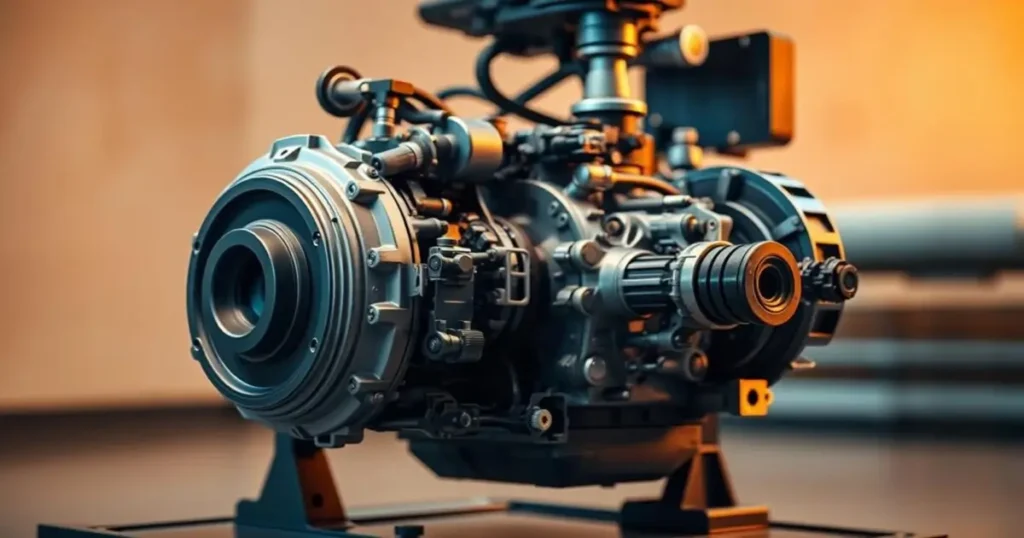
The 325iX was produced in relatively small numbers and is now highly sought after by collectors due to its rarity and innovative technology. Potential buyers should be aware of the unique maintenance requirements of the AWD system, including the need for regular checks on the viscous coupling and the potential for increased wear on certain components.
Suspension, Handling, and Driving Experience
The suspension, handling, and braking of the E30 were pivotal in establishing its reputation as a driver’s car. The BMW E30 was engineered to deliver a balanced driving experience, combining comfort with performance.
MacPherson Struts and Semi-Trailing Arms
The E30’s suspension system utilized MacPherson struts at the front and semi-trailing arms at the rear. This setup provided a good balance between ride comfort and handling agility. The MacPherson strut design allowed for more precise steering and better handling characteristics, while the semi-trailing arms contributed to the car’s stability during cornering.
The specifications of the E30’s suspension were tailored to its various models, ensuring that each variant offered a unique driving experience. The combination of these suspension components played a significant role in the E30’s overall handling and driving dynamics.
Braking Systems and ABS Introduction
The braking system on the E30 evolved throughout its production run. Initially, early models like the 316 and 318 used solid front discs, while later models were equipped with vented discs for improved heat dissipation. Most models featured solid disc brakes at the rear, although some early four-cylinder and six-cylinder models used drum brakes.
- The introduction of Anti-lock Braking System (ABS) in 1986 marked a significant safety advancement, although it was optional on many models.
- The braking systems were matched to the performance potential of each E30 variant, ensuring effective stopping power.
- Common issues included caliper problems, master cylinder failures, and ABS system malfunctions, which potential buyers should be aware of.
Maintaining the braking system is crucial for the E30’s safety and performance. Upgrades such as larger disc conversions and performance brake pads can enhance stopping power for enthusiasts seeking improved braking capabilities.
The Legendary BMW M3 E30
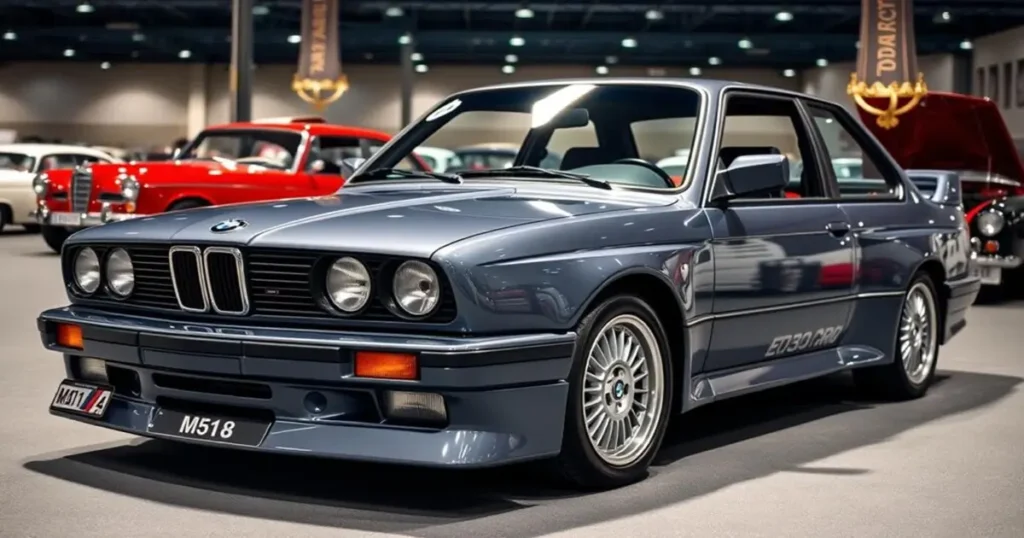
Born out of BMW’s desire for racing dominance, the E30 M3 has evolved into a highly sought-after collector’s item. The BMW E30 M3 is a testament to BMW’s engineering prowess and its impact on the automotive world.
S14 Engine: The High-Revving Heart
The heart of the E30 M3 is its S14 engine, a high-revving powerplant that was a marvel of its time. With its ability to reach high RPMs, the S14 engine provided the M3 with the performance needed for both racing and the spirited driving that enthusiasts crave.
This engine’s significance extends beyond its performance; it represents the pinnacle of BMW’s engineering during the late 1980s, showcasing their commitment to creating high-performance vehicles.
Widened Body and Racing Pedigree
The E30 M3 boasts a widened body that distinguishes it from other E30 models. This wider stance not only enhances its visual appeal but also improves its handling capabilities, a critical factor in its racing success.
The M3’s racing pedigree is well-documented, with numerous victories in various racing series. This heritage has contributed significantly to its desirability among collectors and enthusiasts.
Collectibility and Investment Potential
The collectibility of the E30 M3 has seen a significant surge in recent years, with prices for pristine examples reaching into six figures. Factors such as its limited production numbers, racing heritage, and the analog driving experience it offers have driven its desirability.
For potential investors, understanding the hierarchy of desirability within the M3 range is crucial, from standard models to the rare Evolution and Sport Evolution models. Verifying the authenticity and documentation of any potential purchase is also essential.
Special Edition E30 Models
Among the many variants of the E30, several special editions stand out for their unique features and regional appeal. These limited edition models were often created to commemorate specific events, enhance performance, or cater to local market preferences.
The Italian/Portuguese 320is: “Baby M3”
The 320is, sold in Italy and Portugal, is often referred to as the “Baby M3” due to its sporty characteristics and the fact that it was a precursor to the more powerful M3 model. This variant was equipped with a high-revving engine and sport-tuned suspension, making it a desirable model among E30 enthusiasts. The 320is was a significant model that showcased BMW’s ability to create performance-oriented vehicles within the E30 lineup.
South African Specials: 333i and 325iS
In South Africa, BMW released two notable special editions: the 333i and the 325iS. The 333i was powered by a 3.2-liter inline-six engine, producing more power than the standard models available at the time. The 325iS, on the other hand, was a high-performance variant that featured a number of upgrades, including a more powerful engine and sport-tuned suspension. Both models were highly regarded in the South African market and have since become sought after by collectors.
Here’s a comparison of the key features of these South African specials:
| Model | Engine | Power Output | Notable Features |
|---|---|---|---|
| 333i | 3.2-liter inline-six | Higher than standard | Unique engine, sport-tuned suspension |
| 325iS | 2.5-liter inline-six | More powerful than standard 325i | Sport-tuned suspension, upgraded brakes |
Limited Editions: JPS and Regional Variants
The John Player Special (JPS) Edition is a notable example of a limited edition E30 model, created for the Australian market to celebrate BMW’s touring car racing success. Based on the two-door 323i, these cars were finished in black with gold pinstripes and gold BBS wheels, and featured Recaro sports seats, JPS badging, and a limited-slip differential. Other regional variants, such as the “Design Edition” and “Touring Design Edition,” were also produced, offering unique styling elements and equipment packages. The “is” models in North America provided sport-oriented features that bridged the gap between standard models and the M3.
These limited edition models not only showcased BMW’s versatility in creating unique variants of the E30 but also demonstrated the car’s enduring appeal across different markets and regions.
North American Market E30s
For collectors and enthusiasts in North America, the E30 represented a unique blend of performance and style, adapted for the local market. The BMW E30 models sold in this region had to comply with specific regulations, such as the 5 mph impact resistance rule, which significantly influenced their design.
Model Range Differences
The E30 models available in North America differed from their European counterparts in several key ways. One of the main differences was in the bumper design, which was mandated by U.S. safety regulations. Additionally, the engine options and trim levels were adjusted to suit local preferences.
These differences contributed to a distinct identity for North American E30 models, making them highly sought after by collectors who value their unique characteristics.
The “Diving Board” Bumpers Era (1984-1987)
A hallmark of North American E30 models from 1984 to 1987 was the “diving board” bumpers, protruding front and rear aluminum bumpers designed to meet the U.S. 5 mph impact regulations. These bumpers were not only functional but also became a distinctive styling element.
The “diving board” bumpers underwent a revision in 1987, when they were shortened to improve aesthetics while still complying with safety standards. This change was achieved by revising the cover/fillers and shortening the shock absorbers on which they were mounted.
| Year | Bumper Type | Notable Features |
|---|---|---|
| 1984-1987 | Aluminum “Diving Board” | Protruding, 5 mph impact resistant |
| 1987 | Shortened Aluminum | Revised fillers and shock absorbers |
| 1989 | Body-Colored Plastic | Replaced aluminum bumpers, aligned with European models |
We will explore the implications of these changes for E30 owners, including those considering a “euro bumper” swap, and discuss the impact on the car’s originality and value.
Common E30 Issues and Weak Points
Owning a BMW E30 means understanding its potential weak points and addressing them proactively. As a classic vehicle, the E30 has developed certain issues over the years, but being aware of these can help in maintaining its performance and longevity.
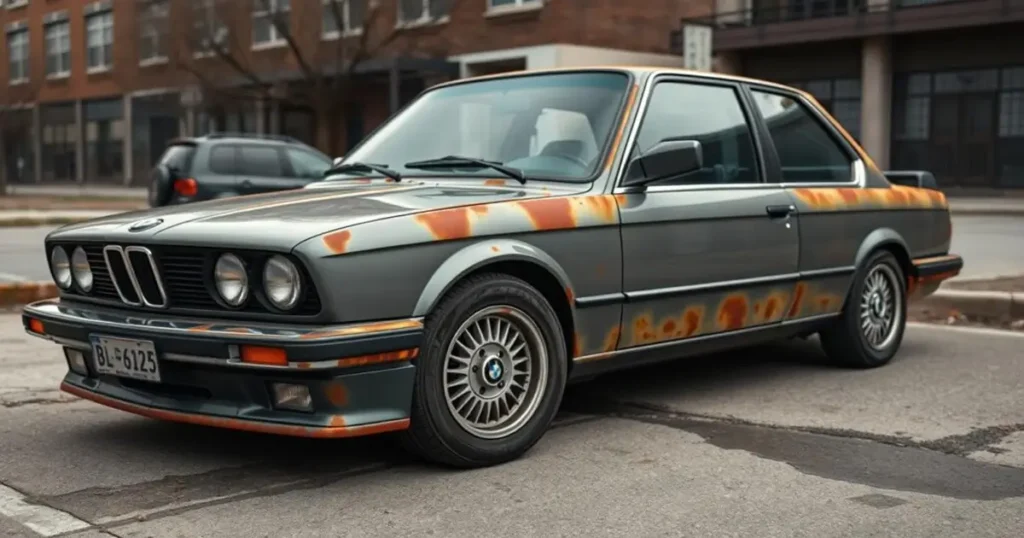
Rust-Prone Areas: Critical Inspection Points
The E30 is known to have some rust-prone areas that require regular inspection. Key areas to check include the wheel arches, door sills, and boot lid. Internal rusting of the fuel tank is also a concern, potentially leading to fuel leaks and other issues. Regular checks and maintenance can help prevent these problems from becoming major repairs.
Electrical Gremlins and Instrument Cluster Failures
Electrical issues are common in older E30 models, often manifesting as faulty instrument clusters, malfunctioning lights, or other electrical gremlins. The age of the vehicle means that wiring and connections can deteriorate, leading to these issues. Regular inspection and repair of electrical components can mitigate these problems.
Mechanical Concerns by Engine Type
The E30 was equipped with various engines, each with its own set of potential mechanical concerns. For instance, the M10 four-cylinder engines are prone to oil leaks from the valve cover and front main seal, as well as timing chain tensioner issues. The M20 six-cylinder engines require regular timing belt service and may experience cracking plastic timing belt covers and need valve adjustments. The M42 four-cylinder engine can suffer from timing chain tensioner and water pump failures. Understanding these engine-specific issues is crucial for effective maintenance.
By being aware of these common issues and taking proactive steps, E30 owners can enjoy their vehicles while minimizing potential problems. Regular maintenance, inspections, and addressing concerns early on can significantly enhance the ownership experience.
Interior Features and Known Problems
As we explore the E30’s interior, we uncover both charm and challenges. The BMW E30’s cabin is renowned for its classic design, but like many E30s, it has its share of issues that have developed over the years.
Dashboard and Trim Deterioration
The E30’s dashboard and trim are prone to deterioration, a common issue in many older vehicles. Cracking and fading are typical problems, particularly in areas exposed to sunlight. Regular maintenance and protective measures can help mitigate these effects.
Comfort and Convenience Features
Despite its age, the E30 was equipped with several comfort and convenience features for its time, including power windows and a premium audio system. However, the original equipment may lack modern connectivity options, and some components may require replacement or upgrade.
Upgrades and Modernization Options
Upgrading the E30’s interior can enhance its usability without compromising its classic character. Options include modernizing the HVAC system for improved functionality, upgrading the audio system with Bluetooth connectivity, and enhancing seating comfort. A comparison of popular upgrade options is shown below:
| Upgrade | Benefits | Considerations |
|---|---|---|
| Modern HVAC System | Improved climate control, enhanced comfort | Cost, installation complexity |
| Bluetooth Audio Upgrade | Modern connectivity, improved sound quality | Aesthetics, compatibility |
| Aftermarket Seating | Enhanced comfort, support | Cost, authenticity |
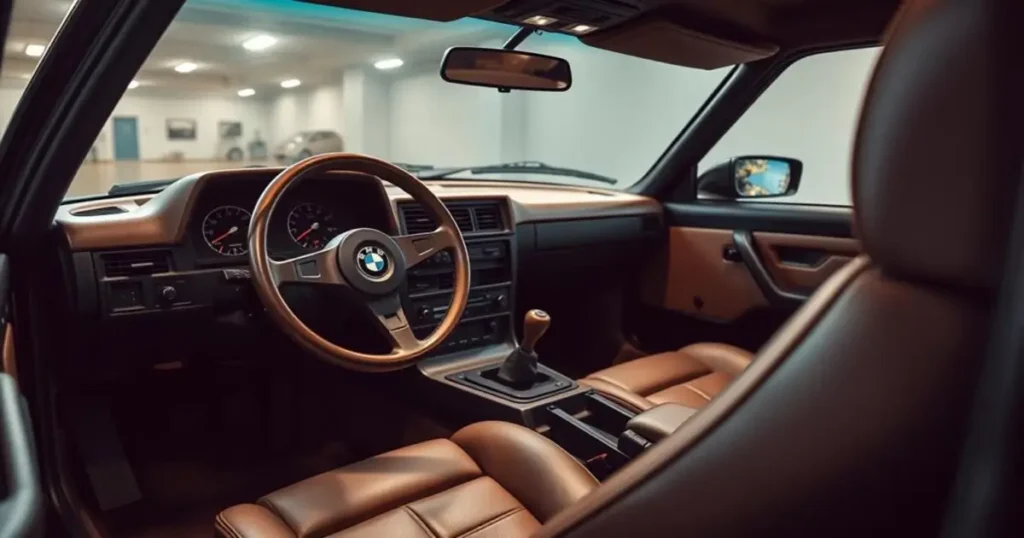
By thoughtfully selecting upgrades, E30 owners can enjoy a more livable classic car without losing its original charm.
Buying a BMW E30: What to Look For
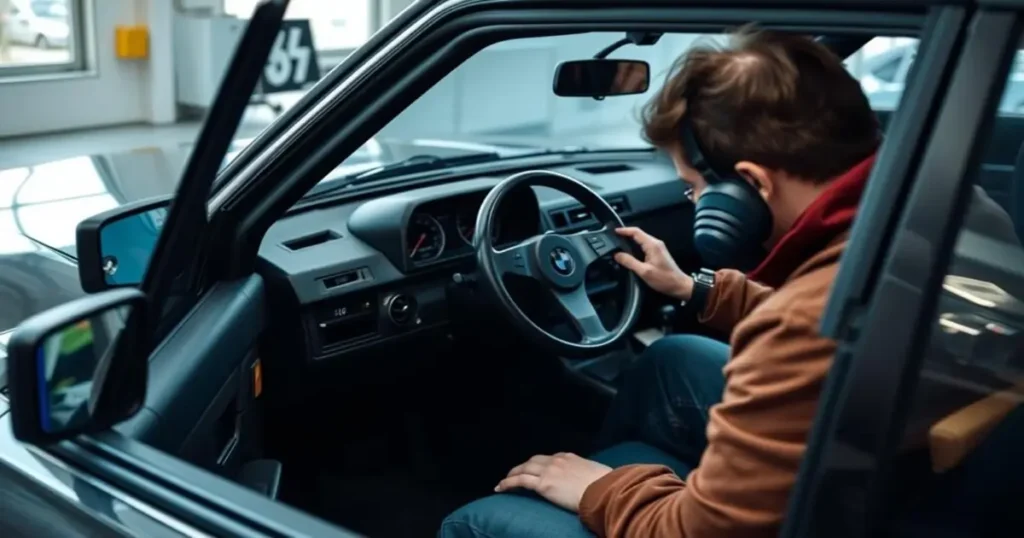
To buy a BMW E30, one must be prepared to inspect and evaluate its condition thoroughly. The E30, being a classic, has its quirks and potential issues, making a comprehensive evaluation crucial.
Documentation and Service History Importance
The documentation and service history of a BMW E30 are vital in assessing its condition and value. A well-maintained service history can significantly enhance the car’s value and provide peace of mind for the buyer. Look for records of regular maintenance, repairs, and any upgrades or modifications.
Original service books and invoices are particularly valuable, as they provide a clear history of the car’s maintenance. Additionally, checking if the car has been properly stored and if any necessary repairs were made can give insights into its overall condition.
Pre-Purchase Inspection Checklist
When inspecting a BMW E30, several key areas need to be examined. Check for signs of rust, particularly in areas prone to moisture accumulation, such as under the carpets and around the wheel arches. The condition of the suspension, brakes, and steering should also be evaluated. Furthermore, inspect the engine for any signs of leaks or excessive wear.
A thorough inspection should also include checking for any accident damage or subpar repair work, as these can lead to further issues down the line. Moisture under the carpets may indicate hidden rust, and repairs can sometimes lead to additional problems, requiring patience and skill during maintenance.
- Inspect the bodywork for any signs of damage or rust.
- Check the engine for leaks or excessive wear.
- Evaluate the condition of the suspension, brakes, and steering.
Price Ranges by Model and Condition
The price of a BMW E30 can vary significantly based on the model, body style, and condition. Generally, the 318i models are more affordable, while the 325is and M3 command a premium. Factors such as originality, mileage, color combination, and optional equipment also play a crucial role in determining the car’s value.
Understanding the current market and the factors that affect the E30’s value is essential for making an informed purchase. Potential buyers should research to establish a realistic budget and identify good value in the current market.
E30 Modifications and Upgrades
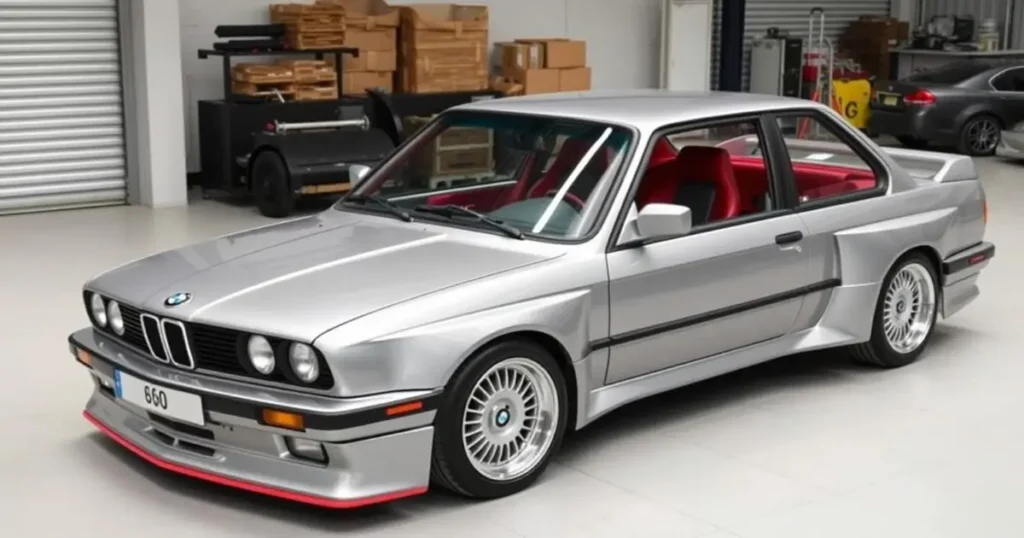
E30 modifications have become increasingly popular, offering owners a way to enhance performance, aesthetics, and overall driving experience. The BMW E30, with its robust design and versatile engineering, provides a solid foundation for a wide range of upgrades.
Popular Engine Swaps
Engine swaps are a common modification among E30 enthusiasts, with popular choices ranging from the BMW M54 & S54 engines to non-BMW options like the Honda K series and LS V8s. While these swaps can significantly enhance performance, they may impact the vehicle’s legalities and insurance. Therefore, it’s crucial to ensure that any engine swap is professionally installed to maintain reliability and avoid future complications.
Suspension and Handling Improvements
Upgrading the suspension and handling of the E30 can dramatically improve its driving dynamics. Enthusiasts often look to enhance the vehicle’s cornering capabilities and overall stability. This can be achieved through the installation of performance-oriented suspension components, such as coilovers and sway bars, which help in reducing body roll and improving handling.
Interior and Exterior Modifications
When it comes to personalizing the E30, owners can explore a variety of interior and exterior modifications. Exterior styling options include period-correct body kits, spoilers, and appearance packages like the popular M-Technic and Alpina looks. Interior upgrades can range from simple improvements such as shift knobs and steering wheels to more comprehensive retrims and dashboard conversions. Additionally, the world of wheel options offers a plethora of choices, from original BMW styles to period-correct aftermarket options from brands like BBS, Alpina, and Hartge.
When modifying your E30, it’s essential to adopt a thoughtful and reversible approach that enhances the driving experience while preserving the vehicle’s essential character.
Restoration Considerations
Restoring a BMW E30 to its former glory involves a thorough assessment of its condition, a clear understanding of the restoration process, and a significant investment of time and resources.
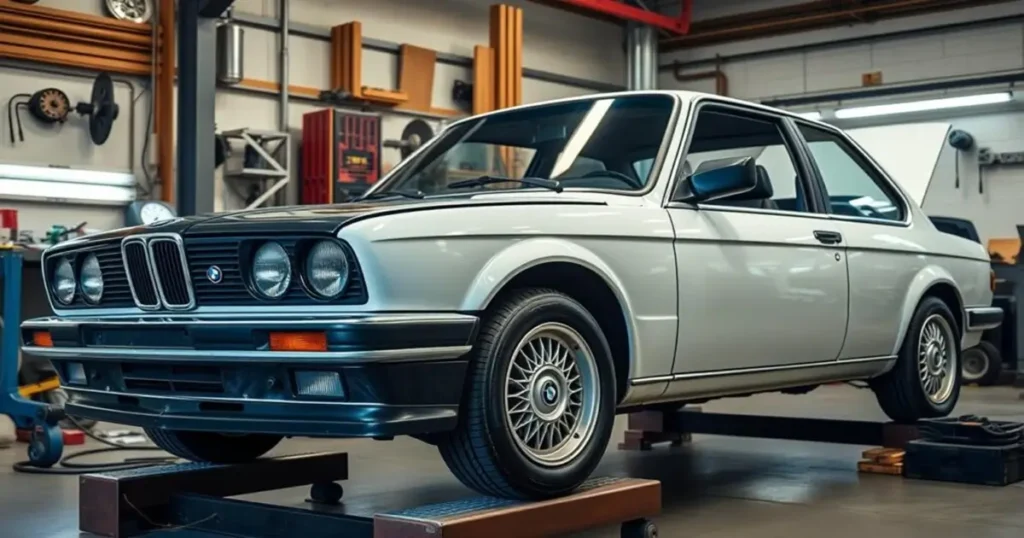
Parts Availability and Sourcing
The good news for E30 enthusiasts is that replacement body panels and parts are readily available, making restoration more accessible than ever.
Sourcing parts can be done through various channels, including original equipment manufacturers (OEM), aftermarket suppliers, and salvage yards.
Professional vs. DIY Restoration
When it comes to restoring a BMW E30, owners must decide between hiring professionals and taking on the project themselves.
Professional restoration offers the advantage of expertise and specialized equipment, ensuring high-quality results, but at a cost.
On the other hand, DIY restoration can be cost-effective and rewarding, but it requires significant time, patience, and mechanical aptitude.
We will examine the considerations involved in choosing between these approaches, including costs, timelines, and the level of expertise required.
Ultimately, the decision between professional and DIY restoration depends on the owner’s skills, budget, and goals for the project.
The E30 Community and Resources
As a testament to its enduring popularity, the BMW E30 has spawned a vibrant community of enthusiasts who are passionate about keeping these cars on the road.
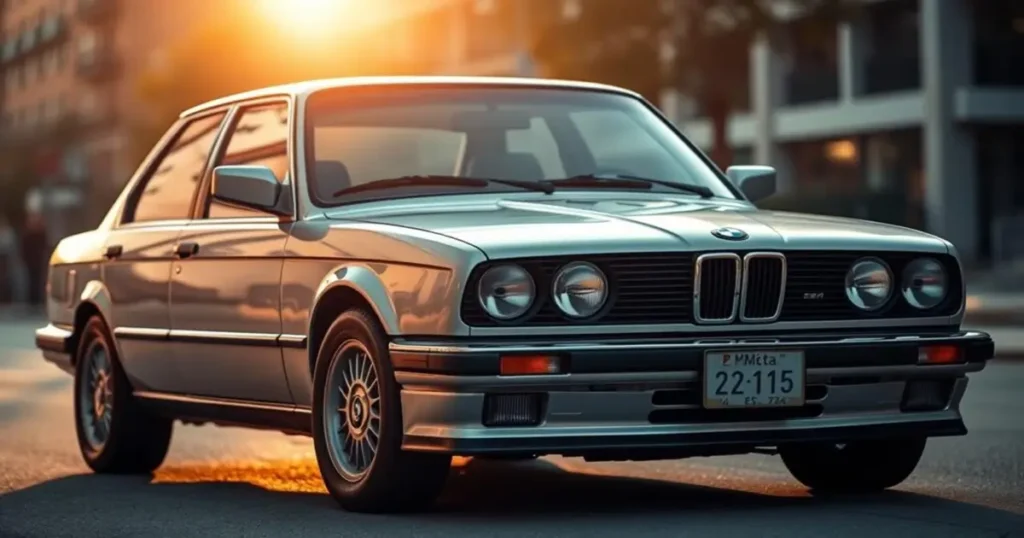
Online Forums and Owner Groups
The E30 community is active online, with numerous forums and social media groups dedicated to discussing all aspects of E30 ownership. These platforms provide a valuable resource for owners seeking advice, sharing experiences, and connecting with like-minded enthusiasts. Some popular online forums include those focused on BMW E30-specific discussions, where members can ask questions, share knowledge, and showcase their vehicles.
These online communities cover a wide range of topics, from maintenance and repair to modification and restoration, ensuring that E30 owners can find the information they need to keep their cars in top condition.
Specialist Workshops and Parts Suppliers
For E30 owners who require more hands-on support, specialist workshops and parts suppliers play a crucial role. We identify leading specialist workshops around the United States that have developed expertise in E30 maintenance, restoration, and modification. These workshops offer a range of services, from routine maintenance to complex restorations, and can provide valuable guidance on keeping your E30 in prime condition.
Major parts suppliers focused on the E30 platform are also highlighted, including those offering OEM parts, performance upgrades, and restoration components. The emergence of companies manufacturing previously discontinued parts is also noteworthy, as it helps keep the E30 fleet serviceable as the cars age.
Developing a relationship with a knowledgeable specialist is emphasized, particularly for owners who don’t perform their own maintenance. Guidance on evaluating specialist shops is provided, including questions to ask, certifications to look for, and how to assess their expertise with the E30 platform.
Conclusion: Why the E30 Remains a Timeless Classic
As we reflect on the BMW E30, it’s clear that this vehicle has achieved a timeless status in the automotive world. The E30’s perfect balance of engaging driving dynamics, robust engineering, timeless styling, and practical usability has elevated it beyond its production years.
The E30 represents the end of an era in automotive design, characterized by an analog driving experience, reasonable size, and minimal electronic complexity. These attributes make it increasingly appealing in today’s world of digitally dominated, oversized cars. Moreover, various E30 models, from the revered BMW M3 to more accessible variants like the BMW 325i and BMW 320i, are showing significant investment potential.
As we look to the future, preserving these BMW classics for subsequent generations becomes both a challenge and a rewarding endeavor. The 1987 BMW and other model years are testaments to the E30’s enduring legacy. With proper care and maintenance, these vehicles will continue to be cherished by enthusiasts and collectors alike.